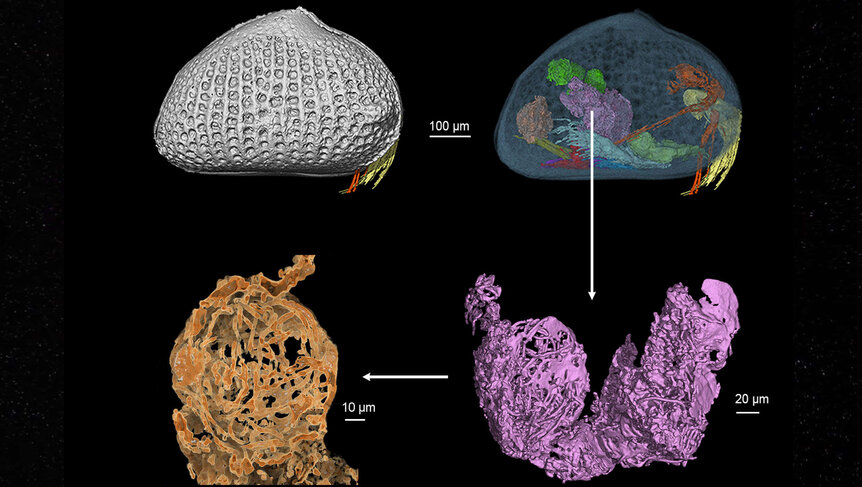Create a free profile to get unlimited access to exclusive videos, sweepstakes, and more!
The oldest, most enormous sperm ever found in tiny creature 100 million years old

No shade to Jurassic Park, but mosquitoes whose last meal was dinosaur blood aren’t the only things found trapped in amber and frozen in time.
Something else caught in sticky tree sap is far stranger than those fictional mosquitoes. Ostracods are crustaceans that look like alien rocks with antennae up close, and 100 million years ago, an unfortunate female of a now-extinct species of ostracod ended up swallowed by a blob of what is now amber. She had also just mated. Not only was this female so well-preserved that scientists were able to virtually dissect her organs, but they also found sperm deposits that never spawned a next generation. What was so unexpected about these sperm is that they turned out to be the largest that ever existed.
“Using the special software we were able to identify the paired seminal receptacles in their typical region in the body, and they were filled with filamentous giant sperm,” Renate Matzke-Karsasz, who led a study recently published in Proceedings of the Royal Society B, told SYFY WIRE.
How could such a miniscule creature produce sperm that could easily dwarf those of much larger animals? Human males and other species that are hundreds of thousands of times the size of this creature tend to produce large quantities of small sperm and still replicate themselves. Ostracods evolved to produce small quantities of gargantuan sperm, at least gargantuan by the standards of something you can only see under a microscope. If you ask, size probably mattered because of an unconscious choice made by the female ostracods’ bodies.
“The females must have favored males with longer sperm over those with shorter ones, probably as an indication of higher fitness of the male,” Matzke-Karsasz said. “It is highly likely that this 'female choice' happened on the level of the reproductive system, then called 'female cryptic choice,' which means males with shorter sperm were not as successful in fertilizing the female's eggs as those with longer sperm.”
What is even more amazing about this sperm is that it was remarkably intact for having been around since dinosaurs trampled the earth. Fossilized sperm almost never surface. The oldest known sperm before this discovery were from a type of worm that was 50 million years old. Matzke-Karsasz believes that an evolutionary strategy that stayed in use for so long implies that it was successful enough without any further upgrades. The extinct species Myanmarcypris hui is long gone, but the strategy must have had some effect, since ostracods have been crawling around for 500 million years and there are still 70,000 extant species around.
The research team did about 20,000 virtual cross-sections of that female, and it was in these images that the huge sperm were found. 3D reconstructions were made after analysis via microtomography. Other ostracods had perished in the same glob of amber, including juveniles that revealed several of the seven phases of molting they go through, and also adult males. Even the way they mate is peculiar. Ostracod sperm are not motile on their own — something that could doom many other types of animals which rely on sperm motility in order for at least one to have a fighting chance of reaching the female ovum. Humans and other species often experience infertility issues from low motility.
Ostracods apparently evolved a solution for this in sperm pumps that push sperm into the female and eliminate the need for motility, at least in the beginning. The double penises that release semen into the two gonopores of the female also might help. Their sperm do become motile after hanging out in the female’s body for a while.
This is more proof that sometimes, creatures develop the strangest adaptations that help them survive for millennia. Ostracods can be found around the world. You certainly don’t see any dinosaurs out there.




























